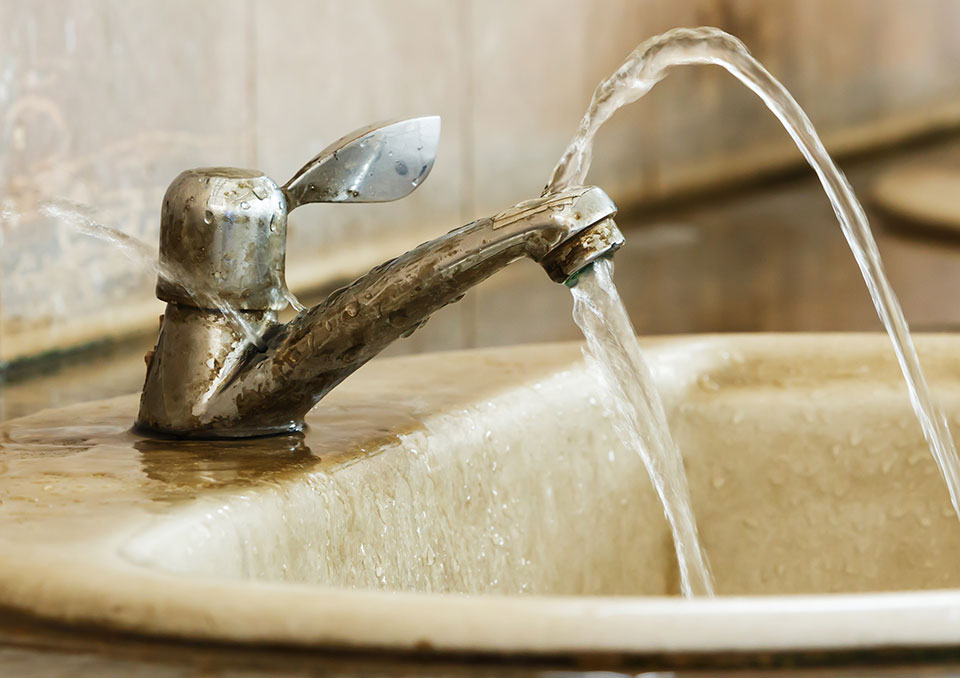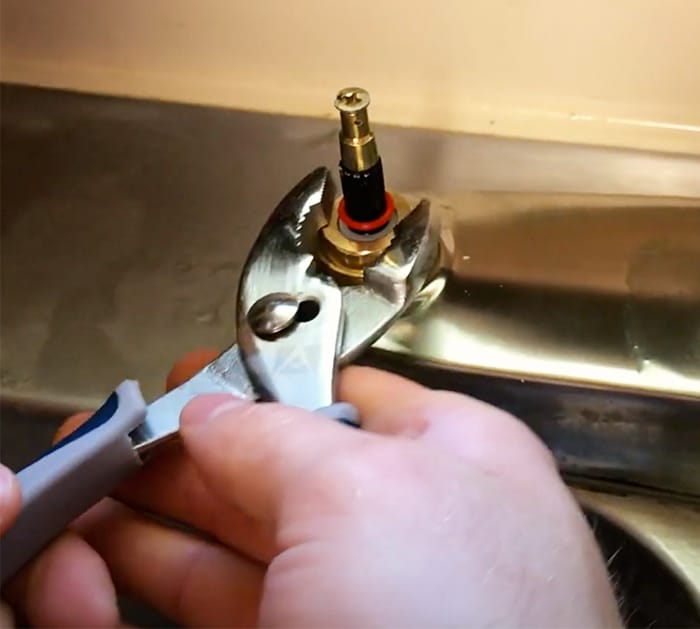How do you actually feel in relation to Why It's Important to Fix Leaky Faucets?

Dripping taps could look like a small inconvenience, but their effect goes beyond just the nuisance of the audio. From wasting water to incurring unnecessary financial costs and health and wellness dangers, overlooking a trickling tap can lead to numerous effects. In this article, we'll delve into why it's essential to address this common household issue promptly and effectively.
Wastage of Water
Ecological Effect
Trickling taps contribute substantially to water waste. According to the Environmental Protection Agency (EPA), a single tap dripping at one drip per secondly can lose greater than 3,000 gallons of water annually. This not only stress water resources however also influences communities and wild animals depending on them.
Financial Prices
Increased Water Bills
Beyond the ecological effect, trickling taps can pump up water expenses significantly. The collected wastage gradually converts into greater utility costs, which can have been avoided with prompt repairs.
Potential Building Damage
Additionally, long term dripping can result in harm to components and surface areas bordering the faucet. Water accumulation can trigger discoloration, deterioration, and also structural problems if left ignored, leading to added fixing prices.
Wellness Concerns
Mold And Mildew and Mold Development
The consistent visibility of dampness from a trickling tap creates an ideal environment for mold and mildew and mold growth. These fungi not only endanger interior air high quality but also present health and wellness threats, especially for individuals with respiratory system problems or allergies.
Waterborne Diseases
Stationary water in dripping taps can end up being a breeding ground for microorganisms and other virus, enhancing the threat of waterborne conditions. Pollutants such as Legionella bacteria prosper in stationary water, potentially bring about major ailments when ingested or breathed in.
Do it yourself vs. Expert Fixing
Advantages and disadvantages of DIY Repair Service
While some might attempt to repair a trickling tap themselves, DIY repair work include their very own collection of challenges. Without proper expertise and tools, DIY efforts can aggravate the problem or lead to incomplete repair services, lengthening the problem.
Advantages of Employing a Specialist Plumber
Working with a specialist plumber makes certain that the underlying source of the leaking faucet is addressed effectively. Plumbers have the expertise and tools to identify and fix faucet issues effectively, saving time and lessening the risk of further damages.
Step-by-Step Overview to Repairing a Dripping Faucet
Devices Needed
Before attempting to take care of a dripping faucet, gather the essential devices, including an adjustable wrench, screwdrivers, substitute parts (such as washing machines or cartridges), and plumber's tape.
Typical Faucet Issues and Their Solutions
Determine the type of faucet and the certain issue causing the drip. Typical problems include damaged washers, corroded shutoff seats, or defective O-rings. Refer to producer guidelines or on-line tutorials for step-by-step support on fixings.
Preventive Measures
Regular Maintenance Tips
To stop leaking taps, perform routine maintenance such as cleaning up aerators, evaluating for leakages, and changing worn-out parts immediately. In addition, take into consideration installing water-saving gadgets or updating to extra efficient fixtures.
Significance of Prompt Repair Works
Attending to leaking faucets as soon as they're noticed prevents further water wastage and potential damages, inevitably saving both water and money in the future.
Influence On Residential Or Commercial Property Value
Perception of Well-Maintained Property
Keeping a residential property in good condition, including addressing upkeep problems like dripping taps, enhances its regarded worth and charm among prospective purchasers or lessees.
Influence on Resale Worth
Characteristics with well-kept plumbing components, consisting of taps, command greater resale values in the realty market. Dealing with trickling faucets can add to a positive impression during residential or commercial property examinations and negotiations.
Environmental Responsibility
Individual Contribution to Preservation
Taking duty for taking care of trickling taps straightens with broader efforts toward water preservation and ecological sustainability. Every person's activities collectively make a considerable effect on protecting valuable resources.
Lasting Living Practices
By focusing on timely repair work and adopting water-saving behaviors, people add to sustainable living techniques that profit both present and future generations.
Verdict
Attending to a dripping faucet surpasses simple convenience; it's a crucial step towards saving water, reducing financial prices, and protecting wellness and home. Whether via DIY repair services or professional support, acting to deal with dripping faucets is a little yet impactful means to promote accountable stewardship of sources and contribute to a healthier, a lot more lasting future.
How to Fix a Leaky Faucet: Step-by-Step Repair Guide
A leaky faucet may seem like a simple annoyance, but if it's not fixed promptly, that leak could cost hundreds to potentially thousands. From water damage to mold, mildew, and high water bills, even a tiny leak can be catastrophic if left unattended. Damage like this can even affect the overall value of your home, so it's important to take the right approach for leaky faucet repair. You may need the help of a plumber in some cases, but we've got a few tips you can try on how to fix a leaky faucet before calling the pros.
Four Faucet Types
When you're learning how to fix a leaky faucet, the first step is knowing what kind of faucet you're working with! There are four common types.
Cartridge Faucets
Cartridge faucets come in one- or two-handled varieties. In one-handled cartridge faucets, hot and cold water combines in a single cartridge. In the two-handled versions, hot and cold water are controlled separately and mixed in the faucet.
Ball Faucets
Ball faucets have a single lever you push up and down to adjust the pressure and rotate to change the temperature. A slotted metal ball controls the amount of water allowed into the spout.
Compression Washer Faucets
They're the oldest type of faucet, but they're still used in many homes — especially older ones. Compression faucets have two separate handles that, when turned, raise or lower the washer that seals a water valve. This valve stops water from flowing through the faucet when it is turned off.
Disc Faucets
Disc faucets rarely need to be repaired due to their maintenance-free design. The water flow is controlled by two discs — the upper one raises and lowers against a fixed lower disc, creating a watertight seal. If your disc faucet starts leaking, you may need to replace the seals or clean residue buildup from the inlets.
Fixing a Leaky Faucet
Step 1: Turn Off the Water
Whether you're learning how to fix a leaky bathtub faucet or how to fix a leaky kitchen faucet, always turn off the water supply to your working area when you're fixing a leak. The last thing you want is a flood added to your list of things to fix.
Look for the shutoff valves below your sink or around the tub and turn them clockwise to stop the water flow. If your faucet doesn't have shutoff valves, you may need to turn off the water for the whole house. Check to make sure it's off by turning the faucet on. If nothing comes out, you're ready to start the repair.
Step 2: Take Apart the Faucet
How you disassemble your faucet depends on the type of fixture you have. You can use a flathead screwdriver to remove the caps on top of the handle or handles for cartridge and compression faucets. Inside, you should see handle screws. Unscrew these with a screwdriver to remove the handle.
Disc- and ball-style faucets will typically have an inlet screw near the handle, and removing that will reveal the interior of the faucet.
Detach the Valve Stem
For cartridge- and compression-style faucets, you'll see the inner valve stem or cartridge once you remove the faucet handles. If you have a compression faucet, unscrew the brass valve stem. If you have a cartridge faucet, pull out the cartridge. If your cartridge has been in place for a while, it may require some tools or extra force to remove it due to mineral deposits.
Examine and Replace Parts
Once you've removed the parts, check them out to confirm what needs to be replaced. You may see corroded rubber washers, O-rings, stems, or cartridges. On a ball-style faucet, check the seats and springs for damage.
If you need to repair a leaky disc faucet, check the inlet and seals on the lower disc.
Once you determine what parts must be replaced, visit your local hardware store. Bring the damaged parts with you to ensure you can purchase the correct components to replace them.
Clean Valves and Faucet Cavity
If you've removed a stem or cartridge, you may notice mineral buildup in the faucet's threads. Use white vinegar to clean the valve seat by soaking it for a few minutes, then scrub it away with a soft toothbrush and rinse with warm water. You can also clean the interior of the faucet in the same way.
Reassemble the Faucet
Once your faucet is cleaned and the required parts have been replaced, it's time to reassemble it. Put the pieces back together and slowly turn the water supply back on. Doing this slowly is crucial because too much initial water pressure can damage the new hardware you've just installed.
https://homewarranty.firstam.com/blog/how-to-fix-leaky-faucet

Do you enjoy reading up on How to Fix a Dripping or Leaky Faucet ? Leave feedback further down. We'd be glad to see your feelings about this write up. We are looking forward to see you back again later on. Sharing is nice. Helping others is fun. Bless you for being here. Return soon.